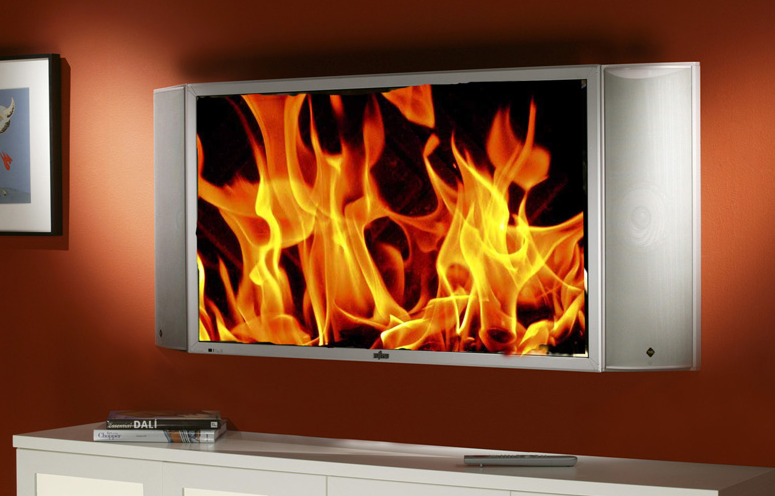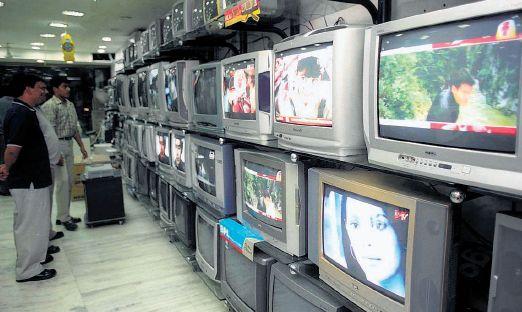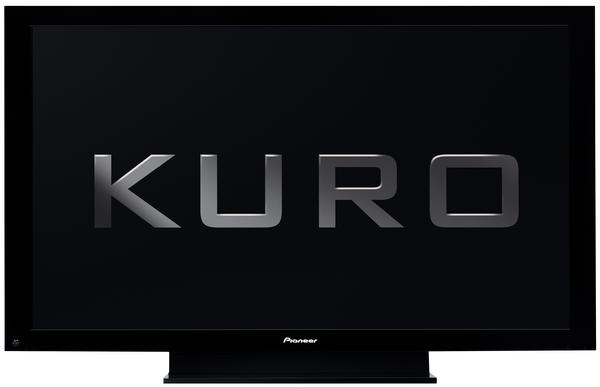No Steam Ahead For Flat Panel Market?

HDTVs used to find their way into just about every conversation on consumer electronics. In fact, there was a point in the not too distant past when the flat panel television was the juggernaut of the tech industry, synonymous with January’s CES, the quintessential purchase for most households. Each successive generation of LCD and plasma models galvanized consumers with their marked improvements in picture quality and physical dimensions.
Yet in recent years, its status has been increasingly hushed due to the inexorable rise of tablets and smartphones as well as the diminishing returns characteristic of advances in picture quality and panel thickness. Statistically, consumers are transitioning to newer mechanisms of media delivery and have not been swayed by manufacturers’ attempts at winning them back. Are entries in the HDTV product segment no longer materially or meaningfully differentiable? Or more poignantly, has the flair and excitement of the conventional television worn thin?
Rise of the HDTV
Back when I attended college, circa 2004, HDTVs were all the rage. Sure, they had been around (mostly in plasma form) since the late 1990s, but their prohibitively high price point meant they would occupy the minority of market share for the next few years. CRT televisions, the bulky, mostly analog devices of yesteryear that were colloquially referred to as “tube TVs”, were still found in most homes in the U.S. and abroad.
 Prior to mass adoption of flat panel sets, a few big-name manufacturers gave CRTs the HD treatment, producing high definition widescreen displays in both direct-view and rear-projection form. However, the visual requirements for HD were found to be practically incompatible with CRT’s primarily analog nature. First, high-definition imagery, precisely defined as a minimum of 720 vertical lines and 480 horizontal lines of resolution, is best appreciated at larger screen sizes. This created an intractable problem for CRT producers as CRT sets were already heavy and unwieldy. Direct-view CRTs larger than 30 inches could easily weigh a couple hundred pounds and were prone to a whole catalog of abnormalities given the more precise mechanics of HD rendering.
Prior to mass adoption of flat panel sets, a few big-name manufacturers gave CRTs the HD treatment, producing high definition widescreen displays in both direct-view and rear-projection form. However, the visual requirements for HD were found to be practically incompatible with CRT’s primarily analog nature. First, high-definition imagery, precisely defined as a minimum of 720 vertical lines and 480 horizontal lines of resolution, is best appreciated at larger screen sizes. This created an intractable problem for CRT producers as CRT sets were already heavy and unwieldy. Direct-view CRTs larger than 30 inches could easily weigh a couple hundred pounds and were prone to a whole catalog of abnormalities given the more precise mechanics of HD rendering.
The most popular HD CRTs were those carrying Sony’s Trinitron label, though their development was stymied by the allure of thinner screens. Sensing the consumer shift in preference and realizing that CRTs were approaching the limits of manufacturing practicality, Sony abruptly ended CRT production to focus exclusively on LCD technology. While the image quality and motion performance produced by these high-definition CRTs were quite good and arguably better overall than the flat panel offerings at the time, the technology was structurally unsuited for high-definition and was rapidly displaced by the impending flat panel revolution.
Consumers much preferred flat screens, anyway. Transportation and installation were no longer operose affairs. Flat panels could be effortlessly mounted for a more classy, finished look. Techheads everywhere strived to impress their friends and neighbors with the thinnest television out at the time. The transition from HD to “Full HD” (or 1080p) gave buyers yet another reason to trade up and purchase new arrays of compatible equipment. More advanced features baked into LCDs continually improved motion and contrast performance, bringing them closer to the level of plasma technology, which has historically performed higher in those areas.
More important for the manufacturers, the HDTV era ushered in a long-awaited influx of business and excitement for the industry. The average household may have held on to their CRT television for well over a decade, despite the release of a new model each year. Now consumers were purchasing HD sets en masse to replace each of their less “wife-friendly” CRT precursors. What’s more, there were not yet disruptive technologies on the market to cannibalize sales from the HDTV segment. For many years, the flat panel was the primary means of media delivery to people around the developed world.
The Post-HDTV Era
 If we conduct a market appraisal given today’s conditions, however, the landscape has changed considerably and surely has the disposition of television manufacturers. More and more video is being consumed on the PC, and viewing is much more fragmented, owing to the disruptive technologies that have emerged in the form of tablets, smartphones and e-readers. The large flat screen is no longer the central hub of the entertainment experience around which viewers revolve, but one of many courses in the buffet of digital media devices.
If we conduct a market appraisal given today’s conditions, however, the landscape has changed considerably and surely has the disposition of television manufacturers. More and more video is being consumed on the PC, and viewing is much more fragmented, owing to the disruptive technologies that have emerged in the form of tablets, smartphones and e-readers. The large flat screen is no longer the central hub of the entertainment experience around which viewers revolve, but one of many courses in the buffet of digital media devices.
Meanwhile, HDTV manufacturers experienced steep profit declines in 2011. Both Sony and Samsung reported a decrease in year-over-year sales in 2011 arising from “deteriorating market conditions in the U.S. and Europe.” This is what you’d expect now that the flat panel install base exceeds 50-60% in the developed nations of U.S., Japan and Europe. Globally, the situation looks less dim due to the emerging markets in China, Latin America and India, but what is especially clear among developed regions is that consumers are not lining up to secure every product refresh.
Smart TV, 3D TV and Beyond
The “Smart TV”, a moniker used to describe televisions that support Internet-enabled media, was the inevitable first response to a consumer base who now expected a more connected digital ecosystem. Unsurprisingly, the addition of streaming media hasn’t propelled sales figures like manufacturers had hoped, largely because this content can be accessed via several other devices consumers already own.
The bulk of Netflix and Hulu traffic is sourced from PC connections, while mobile video consumption (which comprises smartphones and tablets) has exploded in the last two years. Popular TV series and movies are now being enjoyed on more portable devices. For much of the U.S., the HDTV is no longer the primary window into our digital world. Repeat HDTV sales are an unreasonable expectation when other conduits of digital media have been deemed perfectly acceptable by the mainstream install base.
Stereoscopic support (or 3D) represents another effort to reclaim former sales volumes. The predominant argument against 3D in the past has been the lack of content, but that chicken or egg problem has largely resolved itself. Each of the primary pay-TV operators offers multiple channels with 3D programming, though admittedly there is little worth watching. There are nearly 100 titles available in the Blu-ray 3D format. Sony has even commercialized a PS3-branded 3D display to recoup its massive end-to-end investments in the 3D marketplace.
Yet according to NPD Display Search’s latest report, 3D TVs represent just 8% of North American unit sales. This tells us that those who are buying new televisions are not swayed by the (optional) 3D support, despite the fact that the feature does not command a substantial premium (if one at all) over 2D models.
At this point, the causal link might seem clear: consumers are spending their money on the latest gadgets instead of buying a newer HDTV. But is there another, more fundamental issue at hand?
Are We Bored of TV?
Not by what’s on the TV, mind you, but by TVs themselves. Have we reached the upper echelon of display performance, where the law of diminishing returns has created an atmosphere of disinterest among consumers? Has panel design and performance reached a dead end? More to the point, is any TV today good enough?
Take panel thickness, for example. I remember awhile back a plasma television at CES that was just 9mm thick. I tracked it down, and it turns out it was a Pioneer plasma from 2008. Note that 9mm is just over 5/15 of an inch. At CES just this month, LG debuted a 55-inch OLED display that’s just 3/16 of an inch thick.
Who cares?
Certainly there was value in reducing panel depth from 2 feet to 5 inches, as it allowed you to fit the TV in spaces that weren’t possible before. But there is almost no added value in reducing thickness from 3 inches to under 1 inch. Somehow I don’t find it plausible when the Wall Street Journal reports that TV manufacturers will attempt to score higher sales with thinner sets.
What about better picture quality? Won’t people pay more for that?
 Perhaps there is no greater market cue than the demise of Pioneer’s flat-panel division in 2009. The singular focus of the legendary Kuro project, which gestated objectively the best consumer-grade display devices by a wide margin, was to produce the deepest black levels of any display to date; everything else was subordinate. The Kuro plasma panels would undoubtedly be considered bare-bones by today’s standards, with no “smart TV” support and limited A/V inputs. Yet Pioneer believed that the quality of the on-screen image would be paramount in consumer’s purchasing minds. It wasn’t, and the Kuro’s relatively exorbitant price tag did not find economic favor in the industry, forcing Pioneer to pursue more profitable product segments in lieu of pursuing what they were inarguably the best at.
Perhaps there is no greater market cue than the demise of Pioneer’s flat-panel division in 2009. The singular focus of the legendary Kuro project, which gestated objectively the best consumer-grade display devices by a wide margin, was to produce the deepest black levels of any display to date; everything else was subordinate. The Kuro plasma panels would undoubtedly be considered bare-bones by today’s standards, with no “smart TV” support and limited A/V inputs. Yet Pioneer believed that the quality of the on-screen image would be paramount in consumer’s purchasing minds. It wasn’t, and the Kuro’s relatively exorbitant price tag did not find economic favor in the industry, forcing Pioneer to pursue more profitable product segments in lieu of pursuing what they were inarguably the best at.
Truthfully, there were many peripheral reasons for Pioneer’s departure. Poor marketing; an excessively high price point; the fact that typical big-box showrooms were unsuitable for demoing its superior image quality. But the underlying cause is that the majority of the market found other options more than adequate. The three years the Kuro line was on the market were the same three years that overall industry sales soared.
As plasma and LCD sets approach maturity, are there any more meaningful gains to be made?
If you were to subjectively assess a random sample of today’s big-name flat panels, irrespective of display technology, you’d likely find the differences in contrast, color, grayscale and other picture parameters negligible or only noticeable under precise lighting conditions. While for the average consumer it was generally true that most displays were “good enough”, this now seems to be true for all but the most hardcore enthusiasts. Now that LCD and plasma performance have converged with regard to nearly every specification, you really can’t go wrong with today’s selection.
The science behind display resolution provides a useful illustration here. When the market transitioned from standard-definition to high-definition displays, even the layman consumer could easily resolve the difference. Today, 1080p is the new standard for large-screen TVs and, particularly at certain screen size-viewing distance scenarios, already exceeds the margins of human visual acuity.
Perceptually, the gap in resolvable detail between standard-definition (480i/p) and HD (720p) is far greater than the jump from 720p to 1080p. For the average living room, anything beyond 1080p increasingly falls prey to the law of diminishing returns. Again, does anybody care about higher resolutions such as 2k and 4k or infinitesimal reductions in black level for future generations of televisions?
What’s Ahead?
OLED offers a potentially optimistic future for television manufacturers, as it effectively combines the best attributes of LCD and plasma display technology. The first large-screen OLEDs are rumored to be released by the end of this year. One estimate for the aforementioned 55-inch OLED by LG puts the sticker price at $8,000. However, plasma and LCD tech has come so far that the increase in image quality OLED provides is decidedly smaller than previous advances in picture performance. If HDTV buyers aren’t willing to pay extra for material differences in display quality, why think they will for marginal ones?
Now that HDTVs must share the spotlight with more convenient and functional devices, manufacturers have a rocky road ahead of them. Tablets and smartphones are currently more popular choices for viewing the content we care about, and HDTV appears to have taken a secondary role. Videophiles and early adopters will undoubtedly continue to spring for the latest and greatest, but the non-bleeding edge consumer base has already spoken with their wallets. The heavily rumored shutdown of the annual CES, an industry trade show with a hardware focus, won’t help the flat panel segment, either. As disheartening as it is to hear, the flat panel arena seems headed toward a period characterized by more consolidation and less innovation.
What do readers think? When was your last HDTV purchase? What is your primary device for watching TV and movies? Is there anything compelling right now or down the road that has convinced you to upgrade your current HDTV? Do you think the industry will recover with OLED and other innovations?


Comments